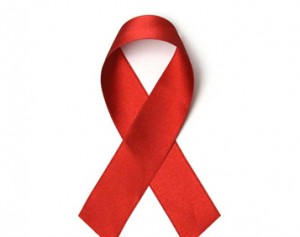Ghana launches five-year HIV/AIDS Strategic Plan
 The Ghana AIDS Commission (GAC) has launched its new five-year National HIV and AIDS Strategic Plan (NSP) for 2016 to 2020, and a “Treat All” Policy to provide guidance for the national HIV and AIDS response.
The Ghana AIDS Commission (GAC) has launched its new five-year National HIV and AIDS Strategic Plan (NSP) for 2016 to 2020, and a “Treat All” Policy to provide guidance for the national HIV and AIDS response.
The new Plan is anchored within the overall vision of the national HIV response which is aimed at eliminating HIV and AIDS in Ghana.
It also subscribes to the 90-90-90 fast-track targets which ensure that by 2020, 90 per cent of all people living with HIV would know their HIV status, 90 per cent of all people with diagnosed HIV infection would receive sustained antiretroviral therapy, and 90 per cent of all people receiving antiretroviral therapy would have viral suppression.
It outlines strategies aimed at achieving the reduction of new infections by 80 per cent from an estimated 12,803 in 2015 to 2,560 in 2020, the reduction in AIDS-related deaths by 80 per cent from an estimated 12,646 deaths in 2015 to 2,530 in 2020 and strengthening of health and community systems.
The NSP focuses on high-impact HIV prevention, treatment, care and support activities and the critical social and pragmatic enablers of the national HIV programme and leverages the investment thinking approach to detail the country’s commitment to invest for results.
Mr Alex Segbefia, the Minister of Health, in an address, acknowledged the GAC and its partners for their concerted efforts which have culminated in the development of the new NSP 2016-2020, which represents Government’s commitment to accelerate the country’s efforts towards ending AIDS by 2030.
He said the NSP was aligned to the National Development Agenda, the Ghana Shared Growth Development Agenda 2014-2017, as well as the Sustainable Development Goals (SDGs) which builds on the unfinished business of the Millennium Development Goals, and provide an ambitious and far-reaching development agenda for the period 2016 to 2030.
He said it was the firm commitment of Government to provide the necessary programmes and funding to ensure healthy lives and promote the well-being of all Ghanaians, and it was also expected that although there would be new cases of HIV, the virus would no longer be a public health danger.
Dr Pat Youri, the Lead Consultant to the NSP, presenting highlights of the Plan, said the Plan provides evidence-based and results-oriented strategies with HIV-related activities in key development sectors that have the greatest potential to optimise the national HIV response.
He said these objectives would be realised through a combination of behaviour change interventions targeting the general population, young people (15-24 years) and key populations, prevention of Mother-to-Child Transmission (PMTCT) and treatment and care for HIV and AIDS.
He also said it would cost a total of $494,645,660 which was almost half a billion dollars to fully implement the NSP, however there was a current total resource gap of 105,423,859, which represent 21.3 per cent of the resource needed.
Dr Youri said the gap was so significant and must be closed to help in achieving the objectives of reducing both new infections and AIDS related deaths by 80 per cent respectively.
Consequently the, AIDS investment framework has enabled the identification of some critical components of the plan which include, high-impact direct HIV activities, critical social and pragmatic enablers and synergies with HIV related activities in key development sectors, he said.
However “we will harness the use of improved health systems and community health systems such as the Community Based Health Planning and Services (CHPS), to maximise access to quality health care”, he said.
Dr Angela El-Adas, the Director-General of the Ghana AIDS Commission, explained how an End Term Evaluation (ETE) was conducted to identify gaps and impact made in the national HIV response over the past five years, and the findings have been used to inform the development of the new Strategic Plan for the period 2016-2020.
She said over the last two decades, the national response to HIV and AIDS has been guided by three strategic plans which involves the National HIV and AIDS Strategic Frameworks I and II for the years 2001 to 2005 and 2006 to 2010 respectively, and the recently ended Plan for the year 2011 to 2015.
She said the current Plan marks the fourth generation guiding document for Ghana’s HIV response, and was developed through a consultative process with key stakeholders at the national and decentralised levels.
According to her it would not only provide the strategic blueprint for the national response to HIV for the next five years, but would also be a platform for the country to launch the “Treat All” Policy, which would see to testing and treating at least 90 per cent of people living with HIV by 2020.
Dr El-Adas said previously, Ghana adopted the World Health Organisation guidelines where only Persons Living with HIV (PLHIV) with a CD4 count of 500 or lower were put on treatment, but with the “Treat All” policy, every person who tests HIV positive would be put on treatment.
It would help us in fast-tracking the national HIV response towards improving quality and coverage and scaling-up of targeted services over the next five years as the country aims to meet the global objective of ending AIDS by 2030, she said.
Source: GNA
